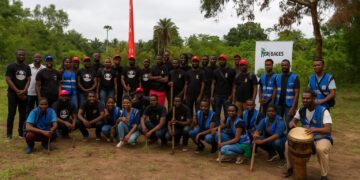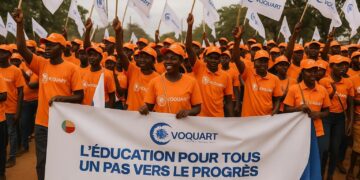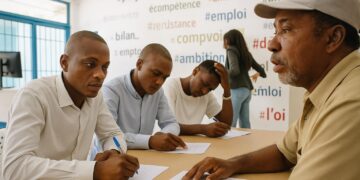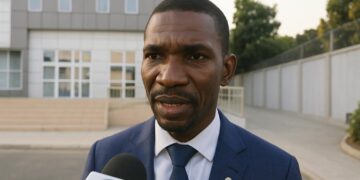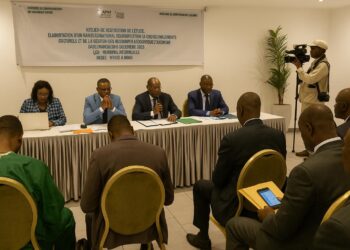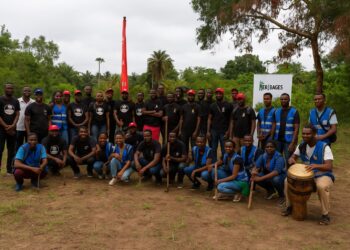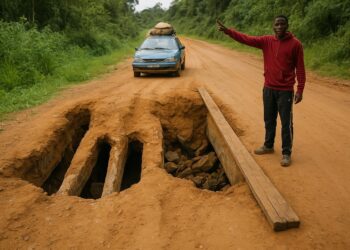Brazzaville workshop maps climate threats
Field observations distilled by the World Food Programme and Congo’s Ministry of Environment draw a clear picture: three northern and central departments face mounting climate hazards that hit harvests, diets and incomes. A recent workshop in Brazzaville translated data into an action framework for resilience.
Likouala endures erratic rainfall that floods lowland zones then withholds moisture during planting, pushing producers into a perilous wait-and-see cycle. In Sangha, geographic isolation compounds weather shocks, while Bouenza’s market linkages cushion volatility yet still rely on fragile road and storage infrastructure to remain competitive.
Diagnostic survey underpins strategy
The diagnostic, led by the African Center for Study and Research for Development and funded by the Adaptation Fund, surveyed 124 villages across the three territories, mapping soil moisture, yield history, assets and indigenous cropping calendars to quantify how climate variability translates into food insecurity.
During the restitution workshop, WFP officer Estelle Nikiema framed the exercise as a collective brainstorming session intended to enrich the baseline and identify ‘actionable, locally owned solutions that bridge science and tradition’ — a phrasing that resonated with agronomists, community leaders and development financiers in the room.
Contrasting departmental risk profiles
Climate models reviewed in the report confirm that Likouala’s mean annual precipitation range swings by more than 200 millimetres between seasons, a spread that overwhelms drainage systems and complicates seed selection. The study recommends site-specific water harvesting and short-cycle cassava cultivars to tame the widening rainfall envelope.
Sangha’s opportunity cost stems from remoteness rather than rainfall; producers often spend two days moving goods to district towns, inflating post-harvest losses. Yet its mosaic of forest clearings supports diversified plots of maize, plantain and groundnut that could double yields with modest storage and feeder-road upgrades over five years.
Bouenza presents a contrasting case where road density, rail proximity and market demand in Pointe-Noire give farmers a commercial incentive to test improved inputs. However, the report flags emerging heat stress on banana clusters, signalling that resilience here depends on affordable solar pumps and cold-chain nodes for perishables.
Indigenous knowledge at the forefront
Experts repeatedly stress that resilience is not imported; it is inherited. Villages already integrate staggered planting dates, intercropping and communal labour rotations, techniques that kept harvests stable long before satellite weather feeds. The study treats these customs as equal partners to extension advice, not picturesque footnotes in policy dialogues.
Director-General for Sustainable Development Olga Rosine Ossombi captured this ethos in her closing remarks, noting that scientific models ‘must converse with the practices that allowed our ancestors to live in harmony’. Her comment subtly reframes adaptation from a top-down mission to a negotiated process of co-creation.
Financing and policy alignment
Funding gaps nonetheless loom. The diagnostic calls for targeted investments in small-scale irrigation kits, climate-smart seed banks and mobile advisory platforms. Initial costings suggest that equipping the 124 villages would require roughly five million dollars, an amount considered manageable for consortiums blending public aid, carbon finance and private agribusiness capital.
At the policy level, stakeholders see complementarity with Congo-Brazzaville’s Nationally Determined Contribution, which targets a 20 percent reduction in agriculture-driven emissions by 2030. Integrating village-scale adaptation plans into that framework could unlock concessional lending from multilateral climate windows without overhauling existing administrative procedures or new legal instruments being drafted.
Social dividends and progress tracking
Beyond economics, resilience initiatives carry social dividends. Improved yields reduce seasonal migration and keep children in school, particularly girls who often leave classes to help bridge food gaps. The workshop highlighted that gender-sensitive extension services and early-warning SMS alerts multiply these outcomes at marginal additional cost for local budgets sustainability.
Translating recommendations into measurable impact will depend on robust monitoring. The study proposes quarterly farmer diaries, satellite vegetation indices and periodic nutrition surveys. Aligning these data streams with the national statistics portal would create a transparent dashboard enabling donors, ministries and village committees to recalibrate actions in real time easily.
Scaling impact across the Congo Basin
Although centred on three departments, findings have wider resonance across the Congo Basin where similar agro-ecological zones confront parallel threats. Sharing methodologies through the Central African Forest Commission could amplify lessons, while positioning Congo-Brazzaville as a laboratory for solutions that respect both forests and food security in Central African policy.
Participants closed the workshop by agreeing to pilot a package of ten quick-win measures this coming planting season, ranging from communal seedbed rehabilitation to participatory weather mapping. Results will feed into a larger funding proposal that the Environment Ministry intends to submit to the Green Climate Fund early next year.
Ultimately, adaptation in Congo-Brazzaville’s food belt will hinge on an alliance between evidence, indigenous wisdom and pragmatic investment. The Brazzaville workshop signalled that this alliance is both technically feasible and politically supported, offering a credible pathway to safeguard harvests, livelihoods and forest integrity under a changing climate for rural futures.
























